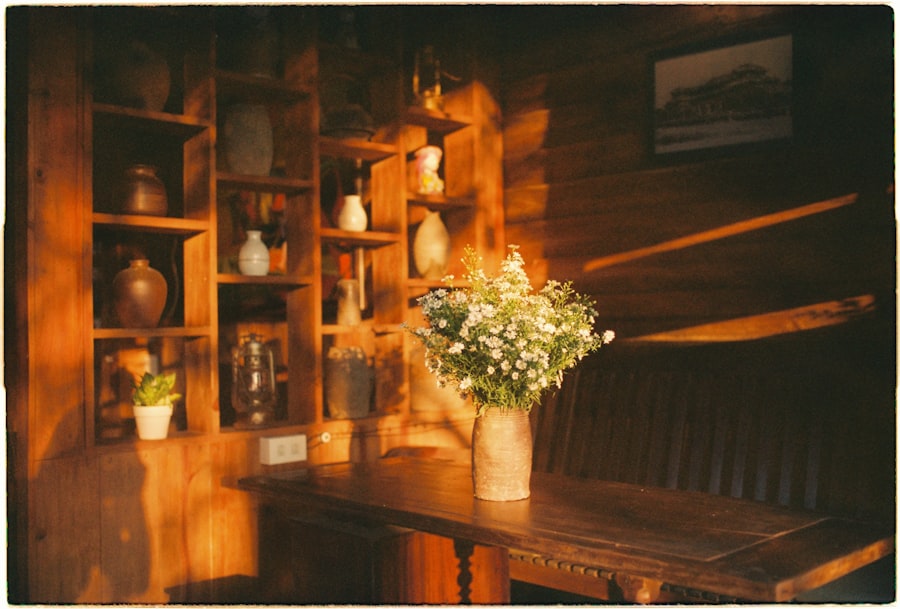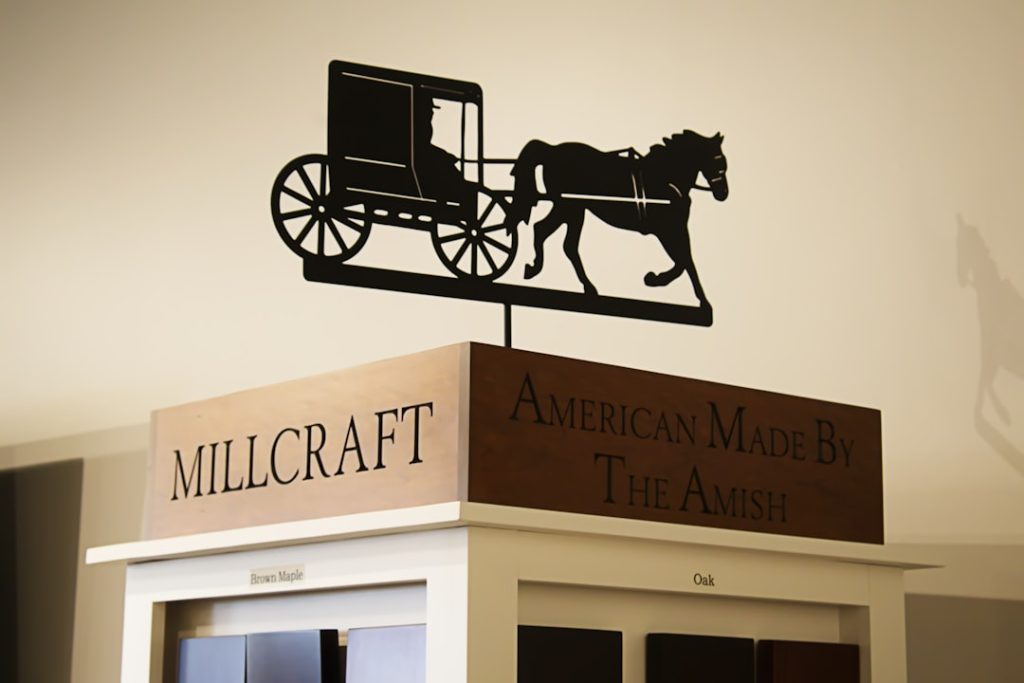The history of Amish cabinetry is deeply intertwined with the broader narrative of the Amish community itself, which traces its roots back to the Anabaptist movement in Europe during the 16th century. The Amish, seeking a life of simplicity and separation from the modern world, migrated to North America in the 18th and 19th centuries, primarily settling in Pennsylvania, Ohio, and Indiana. As they established their communities, they brought with them a rich tradition of craftsmanship that emphasized functionality, durability, and aesthetic appeal.
The early Amish settlers relied on locally sourced materials and traditional techniques to create furniture that was not only practical but also reflected their values of hard work and community. As the years progressed, Amish cabinetry evolved into a distinct art form, characterized by its meticulous attention to detail and commitment to quality. The craftsmanship was often passed down through generations, with skills honed through years of practice and dedication.
The Amish approach to woodworking is not merely a trade; it is a way of life that embodies their principles of simplicity and sustainability. By the late 20th century, as the demand for handcrafted furniture surged, Amish cabinetry gained recognition beyond their communities, becoming a sought-after choice for those who appreciate fine craftsmanship and timeless design.
Key Takeaways
- Amish cabinetry is rooted in a rich history emphasizing craftsmanship and tradition.
- Traditional woodworking techniques are central to the creation of durable, high-quality cabinets.
- Quality materials are crucial for the longevity and beauty of Amish cabinetry.
- Customization allows for personalized designs that meet individual needs and preferences.
- Amish cabinetry combines timeless aesthetics with sustainable, handcrafted artistry.
Traditional Amish Woodworking Techniques
Traditional Amish woodworking techniques are rooted in a deep respect for the materials and the craft itself. The Amish often utilize hand tools rather than modern machinery, which allows for greater precision and a personal touch in each piece they create. Techniques such as mortise and tenon joinery are commonly employed, providing strength and durability without the need for metal fasteners.
This method not only enhances the structural integrity of the furniture but also aligns with the Amish philosophy of simplicity and natural beauty. In addition to joinery techniques, the finishing processes used by Amish craftsmen are noteworthy. They often apply natural oils or hand-rubbed finishes that enhance the wood’s grain while providing protection against wear.
This approach not only preserves the integrity of the wood but also contributes to the unique character of each piece. The use of traditional techniques ensures that every cabinet is not just a functional item but a work of art that tells a story of craftsmanship and dedication. The emphasis on handwork over machine production results in variations that add to the charm and individuality of each piece, making them truly one-of-a-kind.
The Importance of Quality Materials in Amish Cabinetry

Quality materials are paramount in Amish cabinetry, as they directly influence the durability, appearance, and overall value of the finished product. The Amish prioritize using hardwoods such as oak, cherry, maple, and walnut, which are known for their strength and beauty. These woods are often sourced from local forests, ensuring that the materials are not only sustainable but also suited to the regional climate.
The selection process is meticulous; craftsmen choose only the finest pieces of wood, free from defects and imperfections, to ensure that each cabinet meets their high standards. Moreover, the commitment to quality extends beyond just the wood itself. The Amish also pay careful attention to the finishes and adhesives used in their cabinetry.
Natural finishes are preferred over synthetic ones, aligning with their values of health and environmental stewardship. This focus on quality materials not only enhances the aesthetic appeal of the cabinetry but also ensures longevity. A well-crafted Amish cabinet can last for generations, often becoming a cherished family heirloom that carries with it stories and memories.
The Role of Customization in Amish Cabinetry
| Metric | Description | Value/Example |
|---|---|---|
| Customization Options | Number of customizable features available in Amish cabinetry | Over 50 options including wood type, finish, hardware, and design style |
| Wood Types Used | Variety of wood species offered for cabinetry | Oak, Cherry, Maple, Hickory, Walnut |
| Average Lead Time | Time taken to complete a customized cabinet order | 6 to 12 weeks |
| Durability | Expected lifespan of Amish cabinetry with proper care | 50+ years |
| Customer Satisfaction Rate | Percentage of customers satisfied with customization options | 95% |
| Customization Impact on Price | Percentage increase in cost due to customization | 15% to 30% increase compared to standard cabinetry |
| Handcrafted vs. Mass-Produced | Comparison of craftsmanship quality | Handcrafted Amish cabinetry rated higher for quality and uniqueness |
| Environmental Impact | Use of sustainable materials and practices in customization | High – use of locally sourced wood and non-toxic finishes |
Customization is a hallmark of Amish cabinetry, allowing customers to create pieces that perfectly fit their needs and preferences. Unlike mass-produced furniture, which often comes in standard sizes and styles, Amish craftsmen work closely with clients to design cabinets that reflect their individual tastes and functional requirements. This collaborative process begins with an understanding of the client’s vision, whether it be a specific style, size, or finish.
The ability to customize extends to every aspect of the cabinetry, from drawer configurations to hardware choices. The customization process is not merely about aesthetics; it also addresses practical considerations such as space utilization and functionality. For instance, a family with young children may opt for cabinets with soft-close mechanisms or rounded edges for safety.
Similarly, a gourmet cook might request specialized storage solutions for spices or cookware. This level of personalization ensures that each piece is not only beautiful but also serves its intended purpose effectively. The result is cabinetry that seamlessly integrates into the home while reflecting the unique personality of its owners.
The Timeless Aesthetic of Amish Cabinetry
The aesthetic appeal of Amish cabinetry lies in its timeless design principles that transcend fleeting trends. Characterized by clean lines, understated elegance, and an emphasis on natural beauty, Amish cabinets possess a classic charm that complements various interior styles—from rustic farmhouse to modern minimalism. The use of rich hardwoods showcases the natural grain patterns and colors inherent in each piece, creating a warm and inviting atmosphere in any space.
Amish cabinetry often features traditional elements such as raised panel doors, dovetail joints, and decorative moldings that enhance its visual interest without overwhelming simplicity. This balance between form and function is a defining characteristic of Amish design philosophy. By focusing on craftsmanship rather than ornamentation, these cabinets maintain their appeal over time, making them a wise investment for homeowners seeking enduring beauty in their living spaces.
The Sustainability of Amish Cabinetry

Sustainability is an integral aspect of Amish cabinetry, reflecting the community’s deep-rooted values regarding stewardship of the land and resources. The Amish prioritize using locally sourced materials, which not only supports local economies but also reduces the carbon footprint associated with transportation. By selecting hardwoods from nearby forests, they ensure that their practices are environmentally responsible while promoting sustainable forestry practices.
In addition to sourcing materials sustainably, the craftsmanship involved in creating Amish cabinetry contributes to its sustainability. Handcrafted furniture typically has a longer lifespan than mass-produced alternatives due to its superior quality and durability. This longevity means that fewer resources are consumed over time as fewer replacements are needed.
Furthermore, many Amish craftsmen embrace eco-friendly finishes and adhesives that minimize harmful chemicals in their products. This holistic approach to sustainability ensures that each piece of cabinetry is not only beautiful but also aligns with environmentally conscious living.
The Art of Handcrafted Amish Cabinetry
The art of handcrafted Amish cabinetry is a testament to skill, patience, and dedication. Each piece is meticulously crafted by skilled artisans who have often spent years perfecting their craft through apprenticeship and practice. This hands-on approach allows for an unparalleled level of detail and care in every cabinet produced.
From selecting the finest wood to executing intricate joinery techniques, every step in the process reflects a commitment to excellence. The artistry involved in creating Amish cabinetry goes beyond mere functionality; it encompasses an appreciation for beauty and craftsmanship that resonates with both makers and users alike. Each cabinet tells a story—of the wood it was made from, the hands that shaped it, and the home it will inhabit.
This connection between craftsmanship and personal narrative elevates Amish cabinetry from simple furniture to cherished works of art that can be passed down through generations.
The Legacy of Amish Cabinetry in Modern Design
The legacy of Amish cabinetry continues to influence modern design trends as consumers increasingly seek authenticity and craftsmanship in their furnishings. In an era dominated by mass production and disposable goods, there is a growing appreciation for handmade items that embody quality and character. Designers often draw inspiration from traditional Amish aesthetics—incorporating elements such as clean lines, natural materials, and functional designs into contemporary spaces.
Moreover, as sustainability becomes a central concern in design practices worldwide, the principles upheld by Amish craftsmen resonate strongly with modern consumers who prioritize eco-friendly choices. The emphasis on local sourcing, durability, and timeless design aligns perfectly with current trends favoring sustainable living. As a result, Amish cabinetry not only endures as a beloved choice for those seeking quality but also serves as a model for how traditional craftsmanship can coexist harmoniously with modern sensibilities.
In conclusion, the rich history and enduring legacy of Amish cabinetry reflect a commitment to quality craftsmanship that transcends time and trends. Through traditional techniques, sustainable practices, and an unwavering focus on customization and aesthetics, Amish craftsmen continue to create pieces that resonate deeply with those who value artistry in their homes. As modern design evolves, the influence of this time-honored tradition remains strong—reminding us all of the beauty found in simplicity and authenticity.



